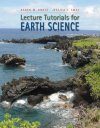About this book
Karen Kortz and Jessica Smay bring their highly successful lecture tutorial approach to this easy-to-implement resource for any introductory earth science module. The brief activities here get students actively involved in the practical application of earth science concepts, while helping them navigate common pitfalls and misconceptions.
Features:
Active Learning
The 70 Lecture Tutorials are designed to follow up a brief lecture or introduction of a topic. They are well suited for small-group work where students collaboratively teach and learn from one another.
Questions Progress in Difficulty
Activities begin with easy-to-follow art and questions to help students identify what they do and do not know, then focus on underdeveloped or misunderstood concepts, slowly stepping students through the process to more difficult questions.
Student 1 vs. Student 2 Debates
This feature takes a unique approach to address misconceptions, with one of the students expressing a common misconception and the other expressing the scientific perspective. Students are required to think about their own potential misconceptions by answering student debates.
Flexible Format
Lecture Tutorials fit right in with other interactive teaching methods and can be used in lecture or lab with any text.
Instructors Manual
Created by the authors, the manual provides answers to activity questions, tips for use, and additional extensional questions.
Contents
Intro to Earth Science
What Do Earth Scientists Do?
Earth’s Rocks
Minerals and Rocks
Rock Categories
The Rock Cycle
Identifying Igneous Rocks
Igneous Rock Mineral Size
Sediments and Sedimentary Rocks
Sedimentary Depositional Environments
Metamorphic Rocks
The History of Metamorphic Rocks
The Rock Cycle and Plate Tectonics
Earth’s Processes
Earth’s Surface Features
Weathering
Landslides
Flood Curves
Groundwater
Water Table
Groundwater Contamination
Glacier Movement
Glacier Budget
Scientific Hypotheses of Dinosaur Extinction
Density
Earth’s Interior and Plate Tectonics
Tectonic Plates and Boundaries
Seafloor Ages
The Age of the Crust
Divergent Boundary Features
Subduction Features
Movement at Convergent Plate Boundaries
Outer Layers of Earth
The Outer Core
Magma Source Depth
Hot Spots
Earthquake Intensity and Magnitude
Locations of Earthquakes
Tsunami
Volcano Types
The Earth Timeline
Earth’s Ocean
Plate Boundaries in Oceans
Features on the Ocean Floor
Ocean surface circulation
Ocean layers
Longshore Current
Tides
Spring and Neap Tides
Earth’s Atmosphere and Climate
Weather Vs. Climate
Layers of the Atmosphere
Simple Atmosphere Circulation
Prevailing winds
Fronts
Climate Change and Carbon Dioxide
How the Greenhouse Effect Works
The Greenhouse Effect and Global Warming
The Greenhouse Effect and the Ozone Hole
Consequences of Global Warming
Alternative Energy Sources
Auroras
Earth in Space
The Universe Timeline
Representing Our view of the Sky
Star Locations
Star Movement
Star Motion and Zenith
The Cause of the Seasons
Lunar Phases
Planetary Positions
Rocky Inner Planets Vs Gaseous Outer Planets
Missions
Relative Sizes in the Universe
Rock Types on Other Planets
Volcanoes on Other Planets
Planet Surface Features
Customer Reviews
Biography
Karen Kortz is Professor of Geology and Oceanography at the Community College of Rhode Island, USA where she's been teaching for ten years; receiving the 2008 Biggs Award for Excellence in Earth Science Teaching. Her research interests include geoscience education research, and in particular, students' conceptions of rocks and plate tectonics and ways to reduce their misconceptions.
Jessica J. Smay is a lecturer in the Physical Sciences department at San Jose City College, USA. She has previously authored Lecture Tutorials in Introductory Geoscience, also with Karen Kortz.


































